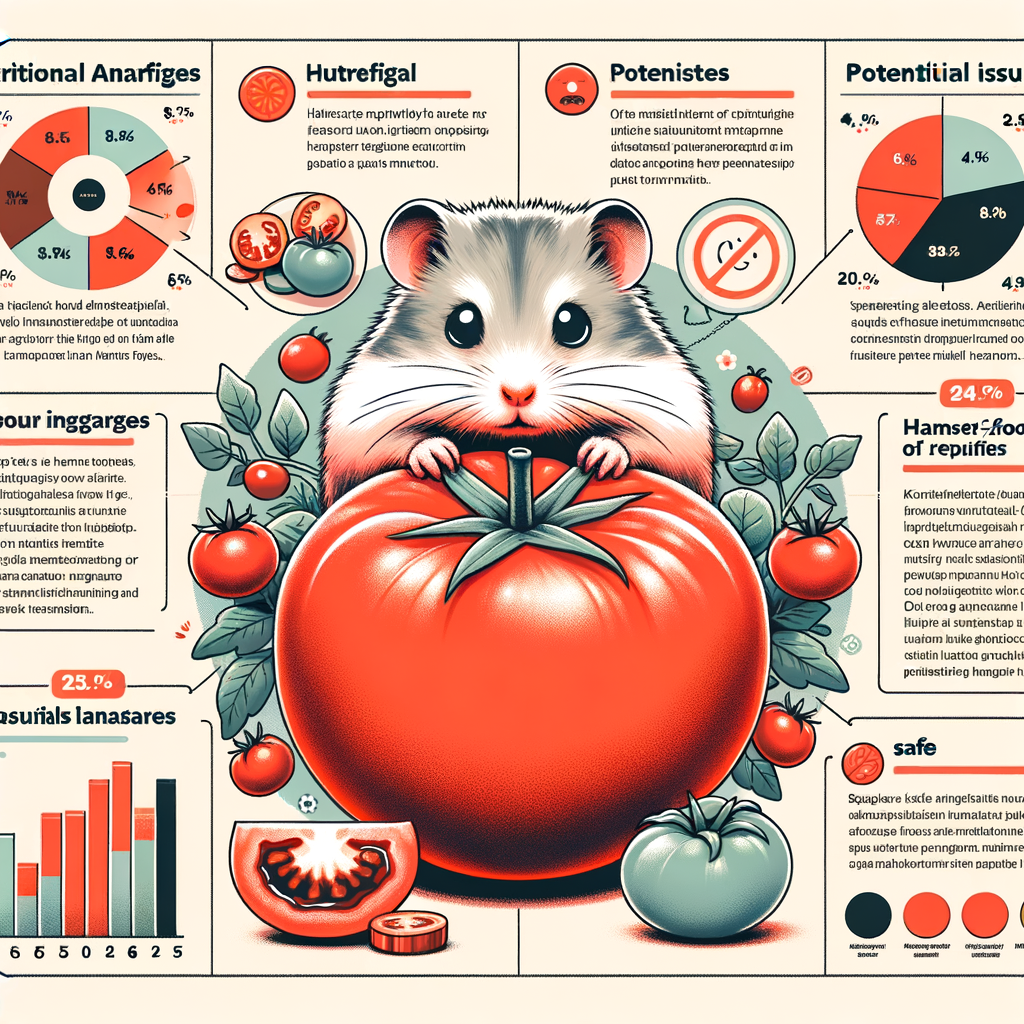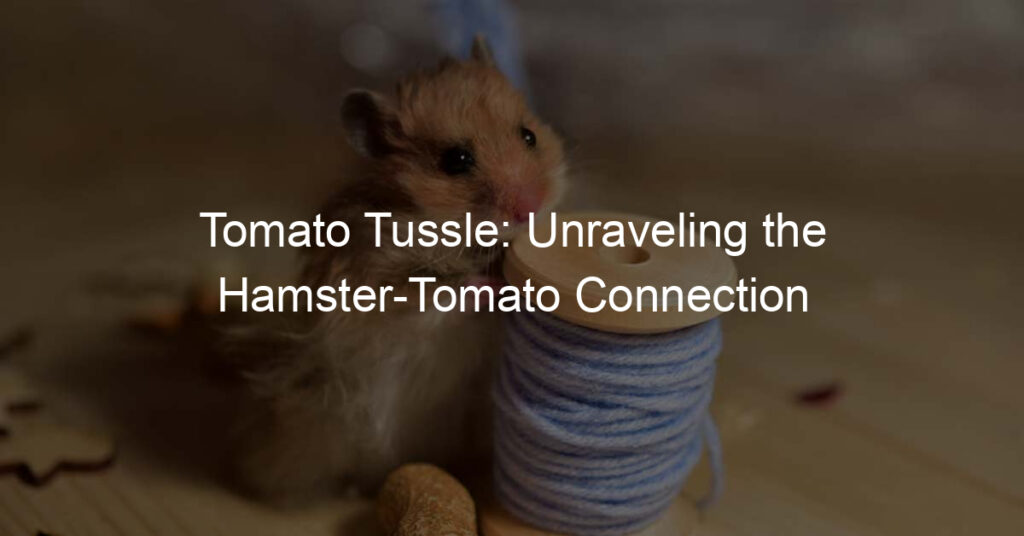
Introduction to Hamster Diet
Understanding the dietary needs of your hamster is crucial for its health and happiness. This introduction will provide an overview of a balanced hamster diet, the importance of variety, and common misconceptions about hamster nutrition.
- Overview of a Balanced Hamster Diet
- Importance of Variety in a Hamster’s Diet
- Common Misconceptions about Hamster Nutrition
A balanced diet for a hamster typically consists of a mix of commercial hamster food, fresh fruits and vegetables, and occasional treats. The commercial food should make up the majority of their diet, as it is specially formulated to meet their nutritional needs. Fresh fruits and vegetables should be given in moderation, as too much can cause digestive issues. Treats, such as seeds and nuts, should be given sparingly, as they are high in fat.
Just like humans, hamsters enjoy a variety of foods. Providing a range of different foods not only keeps your hamster interested in its meals, but also ensures it gets a wide range of nutrients. Try to include a mix of different fruits, vegetables, and commercial foods in your hamster’s diet.
One common misconception is that hamsters can survive on seeds and nuts alone. While these are a favorite treat for many hamsters, they are high in fat and lack many of the nutrients hamsters need to stay healthy. Another misconception is that all fruits and vegetables are safe for hamsters. In reality, some can be harmful or even fatal. Always research before introducing a new food to your hamster’s diet.
In the following sections, we will delve deeper into understanding hamster food preferences, safe foods for hamsters, and the effects of tomatoes on hamsters. We will also provide a guide on feeding tomatoes to hamsters. Stay tuned to unravel the hamster-tomato connection.
Understanding Hamster Food Preferences
Just like humans, hamsters have their own unique food preferences. These preferences are influenced by a variety of factors, including their natural diet in the wild, their individual health needs, and even their personal likes and dislikes. In this section, we will delve deeper into the hamster’s relationship with food and the factors that influence their food choices.
-
Hamster’s Relationship with Food
Hamsters are omnivores, which means they eat both plants and meat. In the wild, their diet consists of seeds, grains, nuts, fruits, vegetables, and occasionally insects. They have a natural instinct to hoard food in their cheek pouches, which they store in their burrows for later consumption. This behavior is a survival instinct, as food in the wild can be scarce.
Hamsters also have a unique relationship with food in that they use it not just for sustenance, but also for entertainment and exercise. They enjoy the process of foraging for food and will often run on their wheel with a piece of food in their mouth, mimicking the act of running back to their burrow with a newfound food source.
-
Factors Influencing Hamster Food Choices
Several factors influence a hamster’s food choices. These include:
- Nutritional Needs: Hamsters require a balanced diet that includes protein, carbohydrates, fats, vitamins, and minerals. The nutritional content of the food can greatly influence their food choices.
- Taste and Texture: Like humans, hamsters have preferences when it comes to the taste and texture of their food. They tend to prefer foods that are sweet and crunchy.
- Health: Hamsters with health issues may have specific dietary needs. For example, a hamster with diabetes may need to avoid sugary foods.
- Availability: The availability of food can also influence a hamster’s food choices. If a particular food is readily available, they are more likely to consume it.
In conclusion, understanding your hamster’s food preferences can help you provide a diet that is both nutritious and enjoyable for your pet. Remember, a happy hamster is a healthy hamster!
Safe Foods for Hamsters
When it comes to feeding your hamster, it’s essential to know what foods are safe. This will ensure your furry friend stays healthy and happy. Here, we’ll explore safe fruits, vegetables, and grains for your hamster.
- Safe fruits for hamsters
- Safe vegetables for hamsters
- Safe grains for hamsters
Fruits are a great source of vitamins and minerals for your hamster. However, not all fruits are safe. Apples (without seeds), bananas, blueberries, and peaches are some of the safe fruits for your hamster. Remember, fruits should be given in moderation due to their high sugar content.
Vegetables are an excellent source of nutrients for your hamster. Safe vegetables include broccoli, carrots, cucumbers, and peas. Always wash vegetables thoroughly before feeding them to your hamster to remove any pesticides.
Grains provide essential carbohydrates for your hamster. Safe grains include brown rice, oats, and barley. Always cook the grains before feeding them to your hamster to aid digestion.
Remember, a balanced diet is key to your hamster’s health. Always consult with a vet if you’re unsure about a particular food. Happy feeding!
| Food Type | Examples |
|---|---|
| Fruits | Apples, Bananas, Blueberries, Peaches |
| Vegetables | Broccoli, Carrots, Cucumbers, Peas |
| Grains | Brown Rice, Oats, Barley |
Tomato Effects on Hamsters
As hamster owners, we often wonder about the effects different foods can have on our furry friends. One such food that has sparked much debate is the tomato. Let’s delve into this topic and uncover the truth.
Hamsters and Tomatoes: A Controversial Topic
Feeding tomatoes to hamsters has always been a controversial topic. There are common beliefs and scientific studies that have tried to shed light on this issue.
- Common beliefs about feeding tomatoes to hamsters
- Scientific studies on hamsters and tomatoes
Many hamster owners believe that tomatoes are safe for hamsters. They argue that tomatoes are a rich source of vitamins and minerals, which can be beneficial for hamsters. Some even claim that their hamsters love the taste of tomatoes and eat them without any problems.
On the other hand, scientific studies have presented a more complex picture. Some research suggests that while tomatoes can be a part of a hamster’s diet, they should be given in moderation. Too much tomato can cause acidity and other digestive issues in hamsters. Furthermore, the green parts of the tomato plant are toxic to hamsters and should be avoided.
In conclusion, while tomatoes can be given to hamsters, it’s important to do so in moderation and avoid the green parts of the plant. As always, when introducing a new food to your hamster’s diet, monitor their reaction closely.
Tomato Troubles in Hamsters
While tomatoes can be a tasty treat for us humans, they can cause some problems for our furry friends, the hamsters. Let’s delve into the potential risks and real-life cases of tomato-related issues in hamsters.
- Potential risks of feeding tomatoes to hamsters
- Case studies of tomato-related issues in hamsters
Tomatoes are acidic and can cause digestive issues in hamsters. They can lead to stomach upset, diarrhea, and even more serious health problems if consumed in large amounts. The high sugar content in tomatoes can also contribute to obesity and diabetes in hamsters.
| Risks | Explanation |
|---|---|
| Stomach upset | Due to the acidity of tomatoes |
| Diarrhea | Caused by the high water content in tomatoes |
| Obesity and Diabetes | Resulting from the high sugar content in tomatoes |
There have been several instances where hamsters have suffered from health issues due to tomato consumption. For example, a case study reported a hamster developing severe diarrhea after being fed a diet high in tomatoes. Another case involved a hamster becoming obese after regularly consuming tomatoes.
These cases serve as a reminder that while tomatoes can be a part of a hamster’s diet, they should be given in moderation. It’s always best to consult with a vet before introducing new foods into your hamster’s diet.
In conclusion, while tomatoes are not entirely harmful to hamsters, they can cause health issues if not given in moderation. Always remember, a balanced diet is key to a healthy and happy hamster.
Feeding Tomatoes to Hamsters: A Guide
Feeding your hamster a balanced diet is essential for their health and well-being. One of the foods you might consider introducing to your hamster’s diet is tomatoes. However, it’s important to do this safely and watch out for any signs of intolerance. This guide will walk you through the process.
- How to safely introduce tomatoes into a hamster’s diet
- Signs of tomato intolerance in hamsters
Introducing new foods to your hamster’s diet should be done gradually. Start by giving your hamster a small piece of tomato. Make sure the tomato is ripe and fresh, and remove any seeds as they can be harmful to your hamster. It’s also important to wash the tomato thoroughly to remove any pesticides. Monitor your hamster after they eat the tomato to see how they react to it.
While tomatoes can be a healthy addition to a hamster’s diet, not all hamsters can tolerate them. Signs of tomato intolerance in hamsters include diarrhea, loss of appetite, and lethargy. If you notice any of these symptoms after feeding your hamster tomatoes, stop giving them this food and consult a vet.
Remember, every hamster is unique and may have different dietary needs and preferences. Always monitor your hamster’s reaction to new foods and consult with a vet if you have any concerns.
| Food | Safe to Feed? | Notes |
|---|---|---|
| Tomatoes | Yes, in moderation | Remove seeds and wash thoroughly before feeding |
| Seeds | No | Can be harmful to hamsters |
In conclusion, tomatoes can be a healthy addition to your hamster’s diet if introduced properly and in moderation. However, always watch for signs of intolerance and consult with a vet if needed.
Conclusion: Unraveling the Hamster-Tomato Connection
As we reach the end of our exploration into the relationship between hamsters and tomatoes, it’s time to summarize the key points we’ve learned and look ahead to future research in hamster nutrition.
- Key takeaways about hamsters and tomatoes
- Future research directions in hamster nutrition
Firstly, it’s important to remember that while tomatoes can be a part of a hamster’s diet, they should be given in moderation. The acidity of tomatoes can upset a hamster’s stomach if consumed in large quantities. Always remove the seeds and stem, as these parts are not safe for hamsters to eat.
Secondly, tomatoes are not a substitute for a balanced hamster diet. They should be viewed as a treat or supplement to a diet primarily comprised of hamster pellets, fresh vegetables, and small amounts of fruit.
While we have a good understanding of hamster nutrition, there’s always more to learn. Future research could explore the impact of different types of tomatoes on hamster health, or investigate the effects of other fruits and vegetables.
Another potential area of study is the long-term effects of a tomato-rich diet on hamster health. While we know that excessive tomato consumption can cause immediate stomach upset, the long-term impacts are less clear.
In conclusion, tomatoes can be a healthy addition to a hamster’s diet when given in moderation. As with any aspect of pet care, it’s important to do your research and consult with a vet if you have any concerns. Happy feeding!








